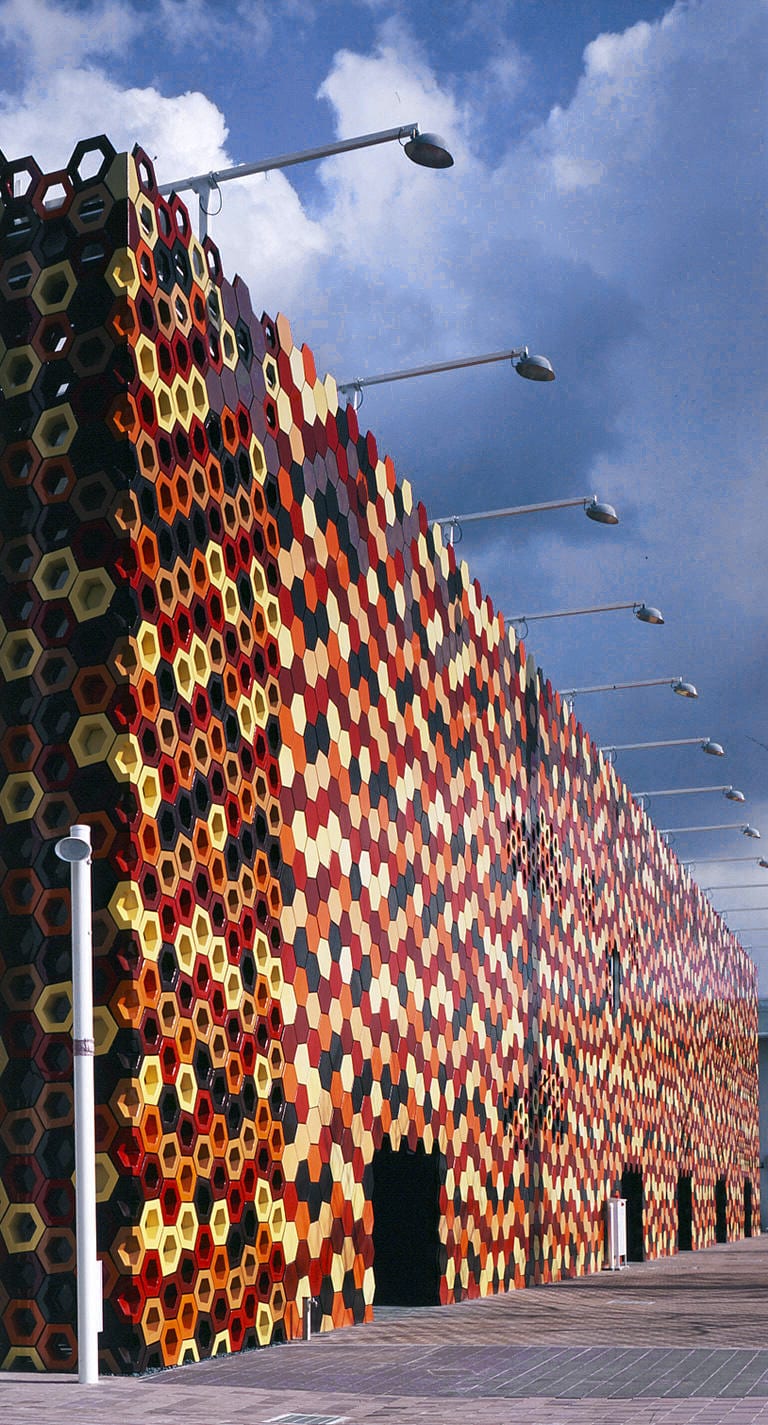This pavilion, which represented Spain in the Aichi International Exhibition in Japan in 2005, aimed to exploit cultural hybridisation as a central theme in Spanish history. Spain’s cultural tradition grew from the hybridisation of the Jewish-Christian cultures which formed Europe as well as the Islamic occupation of the Iberian Peninsula between the 8th and15th centuries. The pavilion was an opportunity to explore the architectural potential of this specific historical legacy. Arches, vaults, lattices and traceries were identified as belonging to both Islamic and Christian cultures.
The Pavilion was conceived as a lattice envelope enclosing a series of interconnected vaulted spaces or “chapels”, each constructed as a vaulted bubble, as a re-interpretation of ornate gothic vaults and Islamic domes. The envelope of the pavilion explored a re-interpretation of the traditional lattice elements, very common in Spanish architecture reflecting the fusion between Christian and Islamic architecture. The lattice enclosed an interstitial space to host the circulation space of the pavilion, and this interstitial space in turn resonated with the Japanese context of the Pavilion: “engawa”, an in-between space present in traditional Japanese architecture. The innovative feature of the lattice was its non-repetitive pattern achieved through the use of six hexagonal tile pieces (like many gothic and Islamic traceries), each different, and coded with six different colour that resonated with many elements distinctive of the Spanish culture: wine, roses, blood (bullfights), sun, sand… The combination of geometrical variety and colour resulted in an apparently non-repetitive pattern, maximising the visual effects of the pavilion.

